The development of domestic UAVs against the backdrop of the Special Operation
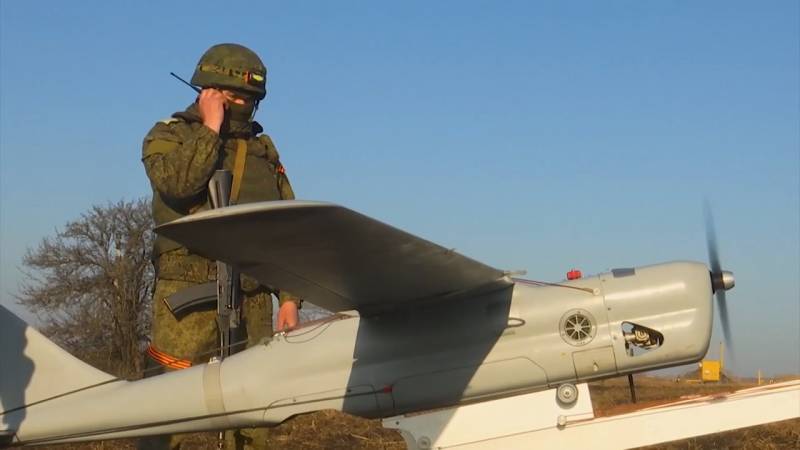
"Orlan-10" is one of the main UAVs of the Russian army. Photo of the Ministry of Defense of the Russian Federation
The special military operation fully demonstrated the potential and value of unmanned aerial vehicles of various classes. The Russian army is armed with a variety of systems of this kind, with the help of which it solves a wide range of tasks. This ensures not only the successful conduct of hostilities, but also accumulates valuable experience. In addition, the foundations are being created for the further development of the UAV sphere.
Proven technology
Modern domestic UAVs for the first time began to be massively used in a real military operation in 2015, in Syria. At that time, Orlan, Eleron, Forpost, etc. were used for observation, reconnaissance, target designation and fire adjustment. In addition, as part of the Syrian operation, military tests were carried out on a number of completely new models, such as the Lancet loitering ammunition or the Pacer, a heavy reconnaissance and strike weapon.
During the Syrian operation, our army has gained extensive experience in operating unmanned systems. In addition, they worked out the issues of interaction of UAVs with other forces and means of troops in solving a number of basic tasks. By the beginning of the Special Operation for the Defense of Donbass, Orlans and other equipment had become widespread in accordance with current regulations.
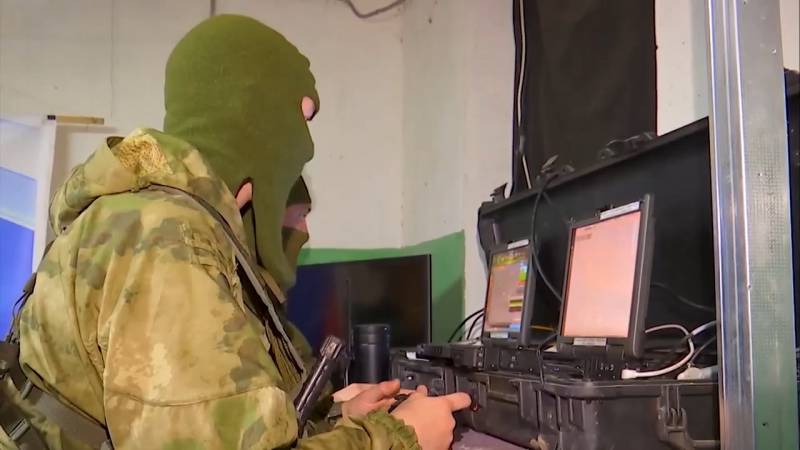
Operators "Orlanov" at work. Photo by the Ministry of Defense of the Russian Federation
Starting from February 24, Russian UAVs of the available types are almost constantly on duty in the airspace above the combat zone and solve all the proposed tasks. First of all, "Eagles", etc. used as a means of reconnaissance and fire adjustment. They work in the interests of the missile forces and artillery, serve rifle units, etc. It is difficult to overestimate the results of the use of such reconnaissance means and their usefulness in achieving common goals.
Starting from last spring, reconnaissance and shock "Pacers" have been participating in the Special Operation. It has been reported several times that such equipment searches for and destroys various enemy ground targets. At the same time, new means of destruction were used, incl. those that have not been previously reported. According to various sources, such UAVs are still operating in the combat zone and are contributing to the common cause of enemy demilitarization.
Loitering ammunition of the main types and modifications, such as "Lancets", is widely used. At the same time, the growth in production rates makes it possible to increase the intensity of their use. Photos and videos from the war zone, received in recent months, allow us to consider Drones-kamikaze is one of the main means for destroying equipment and other enemy targets.

Heavy "Pacer" with rocket armament. Photo by the Ministry of Defense of the Russian Federation
In the light class
Already during the Special Operation, the Russian army and other formations that later joined it received a wide range of new UAVs of various classes. Part of this technology supplemented the existing unmanned fleet, while other samples created new niches and occupied them. As a result, our army's reconnaissance and strike capabilities have grown markedly.
First of all, light commercial UAVs that got into the army and other formations thanks to enthusiasts and activists drew attention to themselves. Despite the limited performance and a certain complexity of operation in frontline conditions, such drones have proven to be a convenient and effective means of aerial reconnaissance at the tactical level. The help of the rear and citizens, as well as measures by the Ministry of Defense, made it possible to quickly increase the saturation of troops with such equipment.
Initially, small UAVs were used only as carriers of optics. However, already in the first months of the Special Operation, they were "taught" to carry and use light weapons - a variety of grenades, mines, etc. They used handicraft suspension systems, and then came to industrial production.

The defeat of the ground target "Pacer". Photo by the Ministry of Defense of the Russian Federation
The niche of light UAVs was first filled through the purchase of foreign-made samples available on the market. To date, domestic developments have also appeared in this class. The transfer of such equipment to the troops is regularly reported, both for testing and based on the results of mass production. In addition, new samples of this class are constantly appearing.
A kind of offshoot from the class of small UAVs are the so-called. FPV drones are vehicles that carry a first-person camera and a specific payload. They are mainly used as light and maneuverable loitering ammunition to hit various targets, incl. hidden. As is the case with other classes, such vehicles are assembled from scratch or remade from available samples. There are already several models of FPV devices on the front, including new samples of domestic development.
Long range
Perhaps the main novelty of last year was the long-range strike UAV Geran-2. The existence of this technique became known only after the first episodes of its combat use against Ukrainian targets. As far as is known, the Russian industry has established mass production of such drones, and they are regularly used to defeat designated targets.
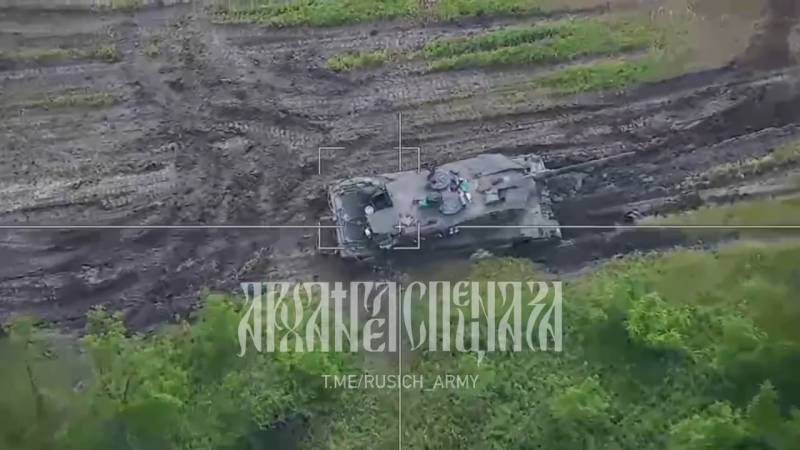
Famous episode of defeat tank Leopard 2 loitering ammunition "Lancet". View from the drone camera. Telegram photo / "Spetsnaz Archangel"
"Geran-2" belongs to the class of heavy UAVs, which has not yet received much distribution in our army. This is an apparatus weighing several hundred kilograms with a wingspan of meters. At a speed of no more than 200-250 km / h, it is able to fly up to 1-2 thousand km and hit a point target.
From the point of view of functions, "Geran-2" is a kind of analogue of cruise missiles. At the same time, the use of technologies and components from the UAV field made it possible to dramatically simplify the design and reduce its cost without serious limitations and loss in performance. In addition, in practice it turned out that an apparatus of this kind is a rather difficult target for enemy air defense.
Unmanned future
UAVs of various classes and types have long and firmly taken their place in the Russian army and regularly show their capabilities. The need for such technology is no longer in doubt. At the same time, the topic for debate so far may be the ways of further development of unmanned aerial vehicles. aviation complexes. But in the current processes of various kinds, one can find hints of future events.
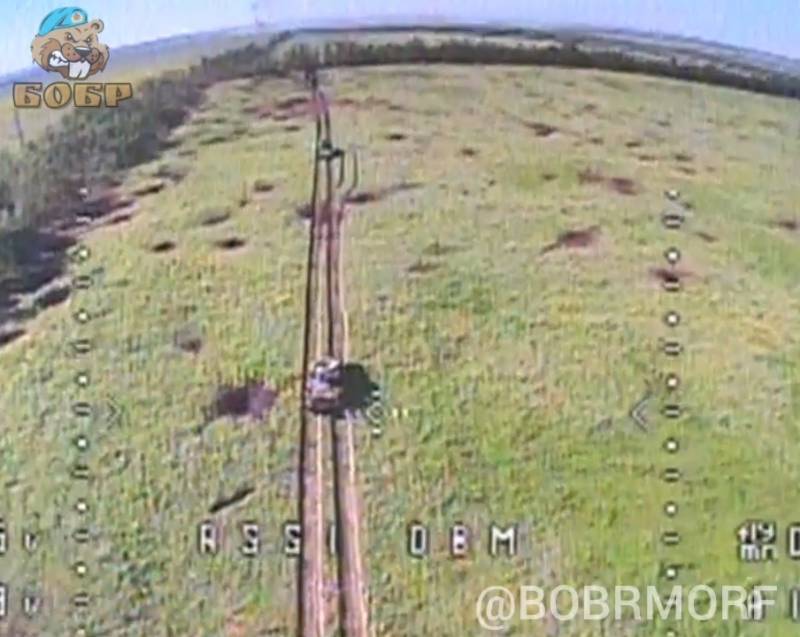
Flight to the target, view from the FPV drone. Photo Telegram / "BOBR"
First of all, it should be expected that the Russian industry will continue to produce current UAV models, and will also develop new models. The main work in these areas will be done by large and well-known manufacturers, but small enterprises will also enter the scene. Already now they are trying to cover part of the needs of the army and show good results for their scale. It is likely that small companies that develop the most successful designs in the future will be able to become larger and increase production.
To date, the domestic industry has proposed UAV projects of all major classes and categories. However, not in all niches there is a mass production of equipment yet. For example, heavy drones remain few and far between, and the production of FPV vehicles is only gaining momentum. It should be expected that in all new and important categories it will be possible to reach the required level of production.
In parallel, enterprises will continue to develop promising models, both already known and completely new. Orion, Okhotnik and other products, still classified, will be brought to the series. Probably, these processes will not be hidden, and the industry will regularly report on its successes.
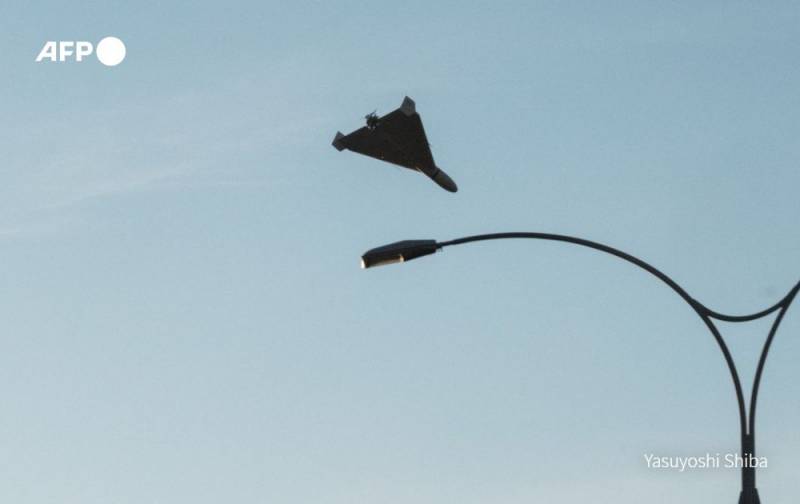
"Geranium-2" flies to its target. Photo AFP
It should be noted that the prospects for unmanned vehicles in our army depend not only on the development and production of specific samples. Of great importance is the accumulation, systematization and study of the experience of using UAVs in a real conflict. Drones and their operators have to work in difficult conditions with active opposition from the enemy, who has various foreign means.
Such experience will be useful both in organizing the operation and use of unmanned systems, and in creating new projects. Developers and operators now know what capabilities the enemy has and how it can interfere with their work. In addition, it becomes possible to predict the further development of its systems and tools.
Results and prospects
Obviously, the current Special Operation is of great importance not only for national security, but also for the development of the armed forces, incl. direction of unmanned aerial systems. With its help, all existing and new models of UAVs capable of solving various tasks are tested. At the same time, such tests take place in conditions of a real conflict, which helps to identify strengths and weaknesses.
In the early stages of the operation, the Russian army used almost all types of UAVs available for a wide range of tasks. In the future, the fleet of unmanned systems began to grow, both in quantitative and qualitative terms. Moreover, equipment of new classes appeared and went into operation. There is every reason to believe that the development of drones in our armed forces will not stop there. The following innovations can be expected in the very near future - and their appearance will definitely not please the enemy.
Information